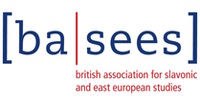Authors
Agnese Zviedre1; 1 Art Academy of Latvia, Latvia Discussion
Museums as cultural institutions preserving recent past and present through their collections should also represent the diversity of embodiment in our society. However, as many disability studies scholars have pointed out, other critical and cultural minorities are disproportionately represented in Western art and art museum collections compared to disability. This statement raises questions on whether and how different minority groups and their perspectives are portrayed in the Latvian National Museum of Art collection, considering that during the Soviet times, people with disabilities were segregated and institutionalized. In 2020 the museum acquired Latvian photographer Aivars Liepiņš's photography series "Children's Carehome No. 2. Baldone" (1991), depicting children with cognitive disabilities living in Baldone care home. Since February 2022, this series is also part of the new permanent exhibition "12 Photographers / 125 Photographs / 10 Series" representing Latvian photography from the 1960s until the 1990s. Thus, from a disability studies perspective, this paper analyses how the photographer has portrayed children living in the institution and whether the Soviet ideology influenced the representation, how the museum has communicated the narrative of the photography series, and whether it reproduces the stigmatized understanding of "otherness".
Keywords: Disability studies, museum collections, photography, representation 
